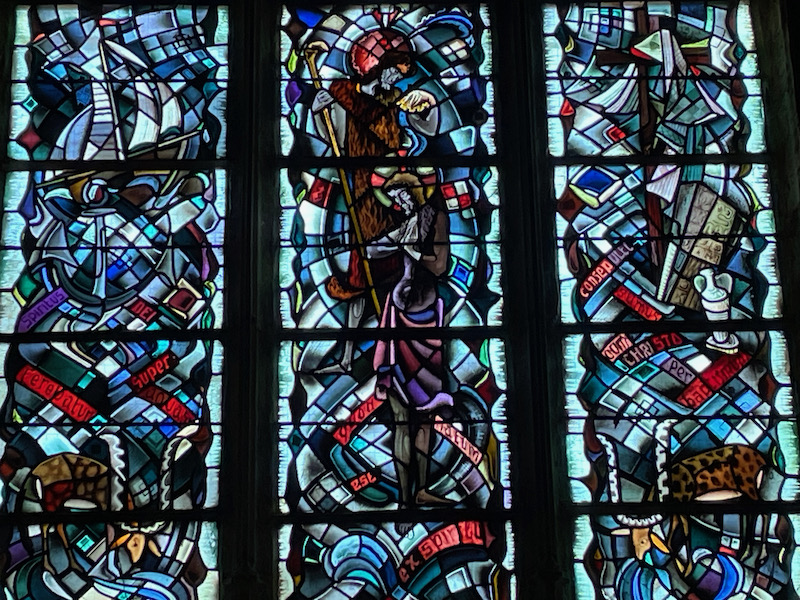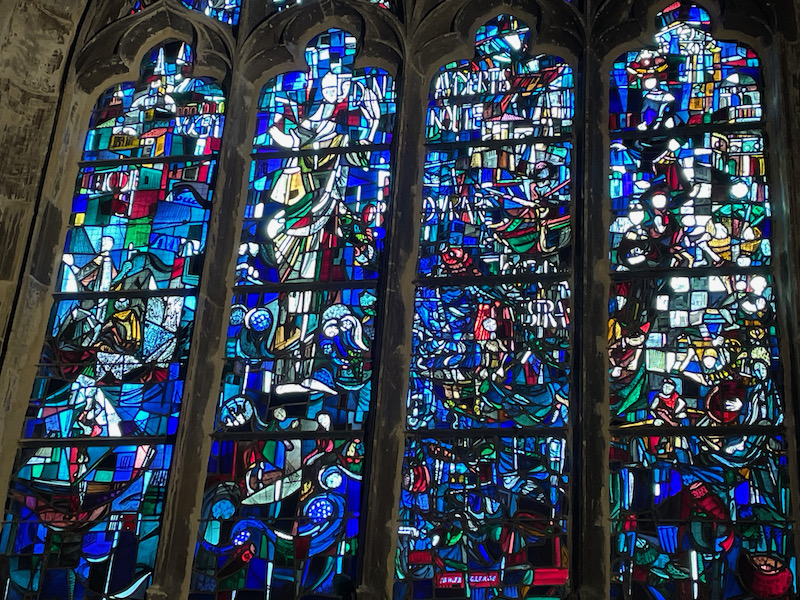Our Blog - Normandy 2023 - Dieppe, France
Dieppe is a seaport on the English Channel at the mouth of the Arques river with regular ferry service to England. The first recorded settlement was a small fishing village in 1030. Dieppe was an important target in wartime; the town was largely destroyed by an Anglo-Dutch naval bombardment in 1694. It was rebuilt after 1696 in a typical French classical style.
During the Second World War Dieppe was occupied by German naval and army forces after the fall of France in 1940. It is known (unfortunately for the Allied forces) for the "Dieppe Raid", which was a costly lesson for the Allies. In August of 1942, Allied soldiers (mostly Canadian) landed here in hopes of occupying the town and gaining intelligence. It was a decisive defeat, with over 1400 deaths and almost 2,000 Canadian soldiers captured. In 1946, a city in New Brunswick, Canada, changed its name to Dieppe in honor of the commemoration of the 913 Canadian soldiers killed in the Dieppe Raid.
A couple pictures of the white cliffs and the beach.
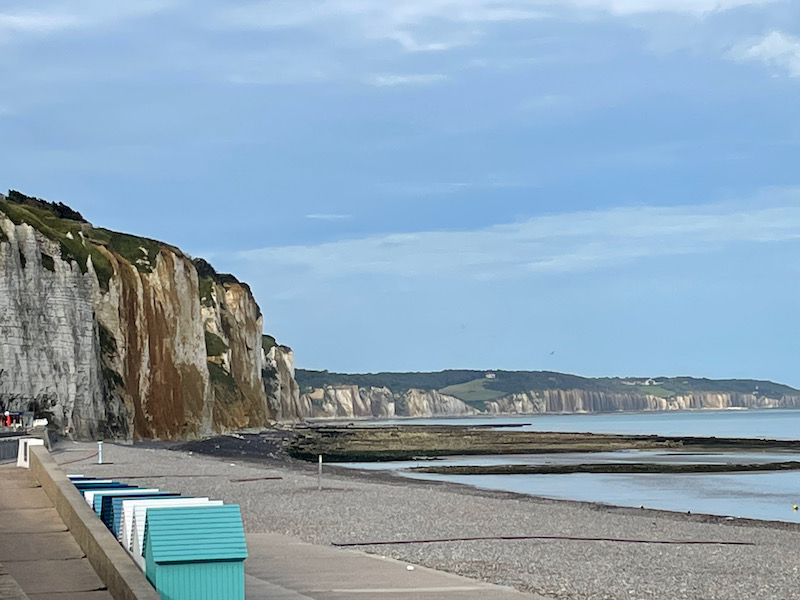
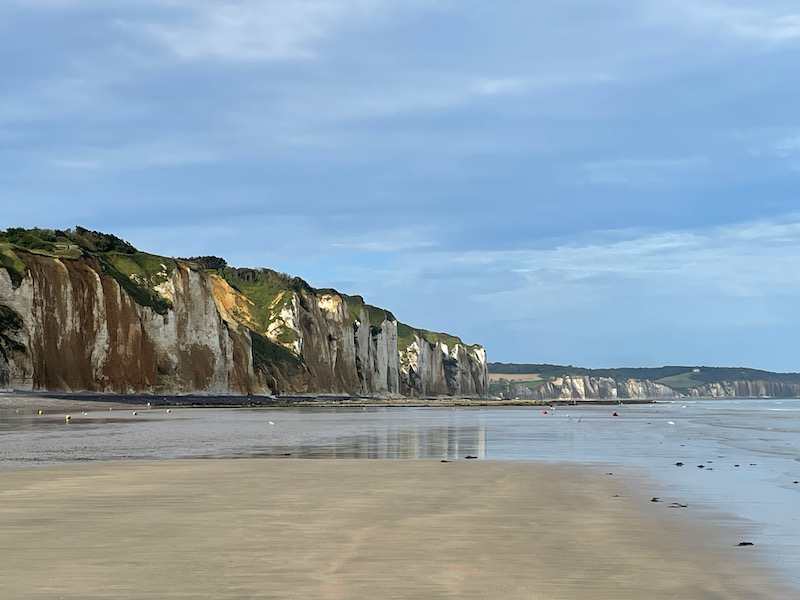
Up on the cliffs overlooking the city is the Château de Dieppe. The original castle here, built in 1188 by King Henry II of England, was destroyed in 1195 by King Philip II of France. A new castle was built in 1433 with round flanking towers. The castle miraculously survived the bombardment in 1694, when most of the rest of the city was destroyed. We didn't bother going up there because it is now a museum that Lucy couldn't go into.
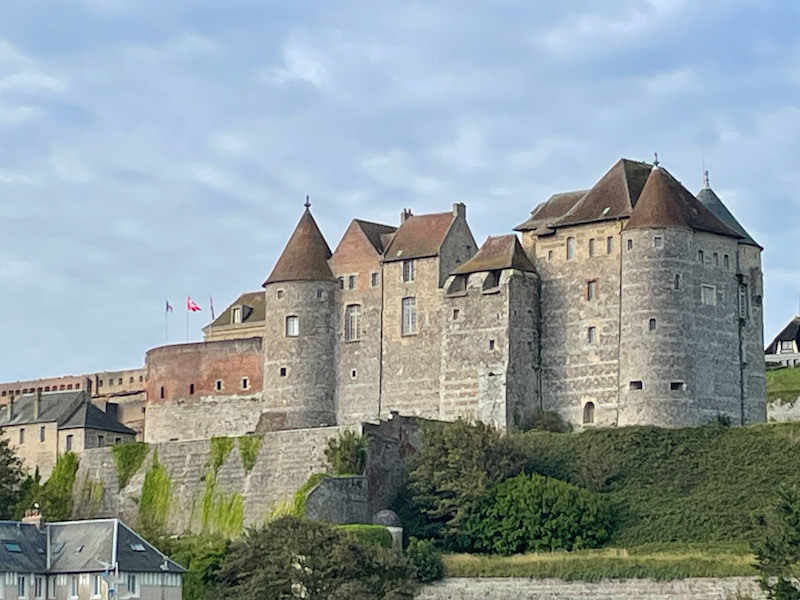
Saint Remy tower is the only thing that remains of the old Church of Saint-Rémy that was built in the 13th-century at the foot of the castle.
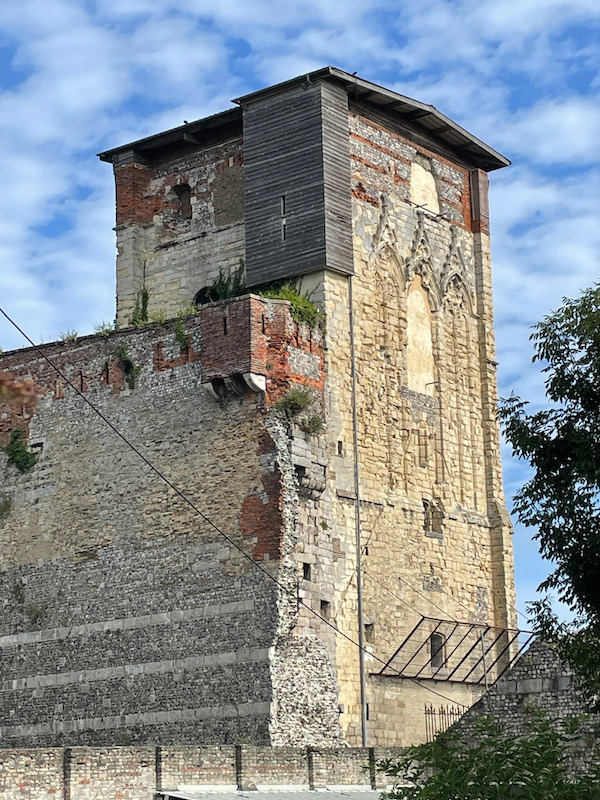
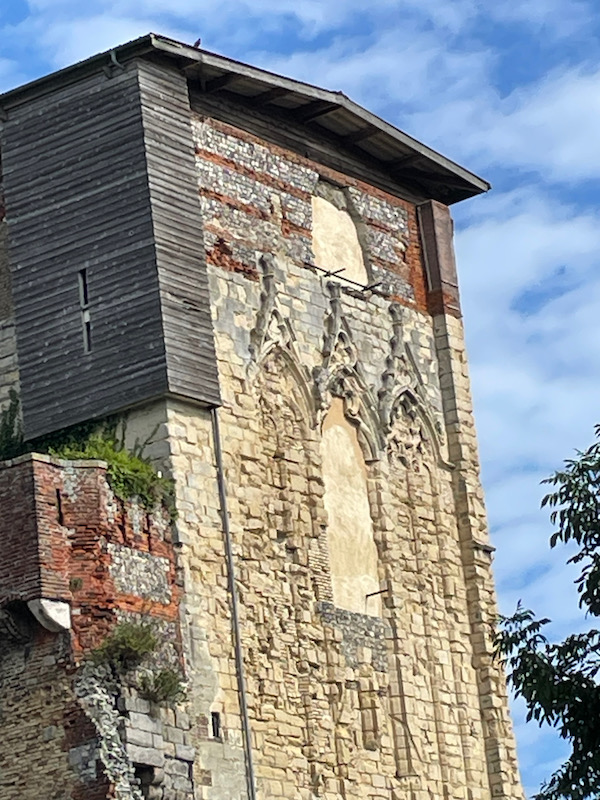
The Porte des Tourelles, built at the end of the 15th century, is one of 7 gates into the city of Dieppe when the city was enclosed inside fortification walls and is the only one that remains. The walls and the other gates were destroyed in the 19th century to "modernize" the city. It was used as a prison until 1826.
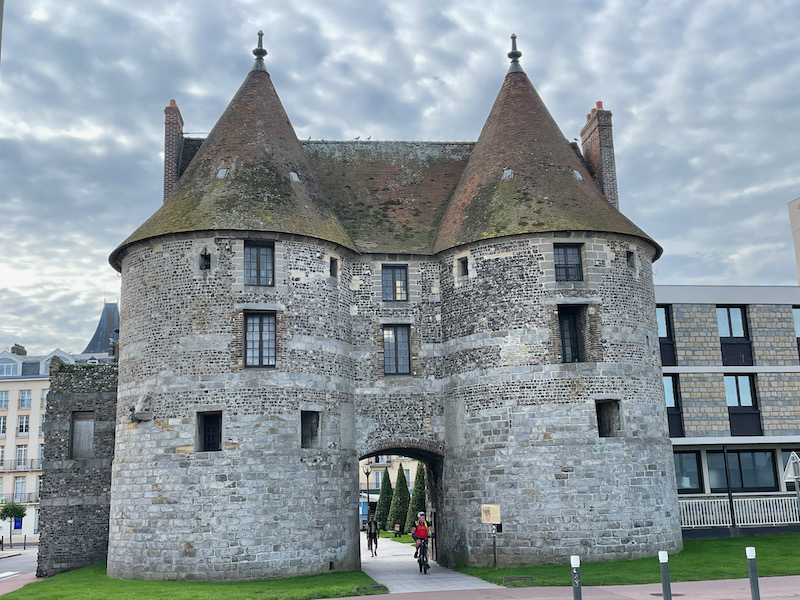
On the boardwalk, there is a memorial to US Rangers. The plaque says that on June 19th, 1942, the 1st Ranger Battalion became the only American unit to be activated in a foreign country. Trained in Scotland and Northern Ireland, the first US Rangers to deploy in combat did so here during Operation Jubilee on August 19th, 1942. 50 US Rangers that were part of British Commando units, and deployed here during the Dieppe Raid.
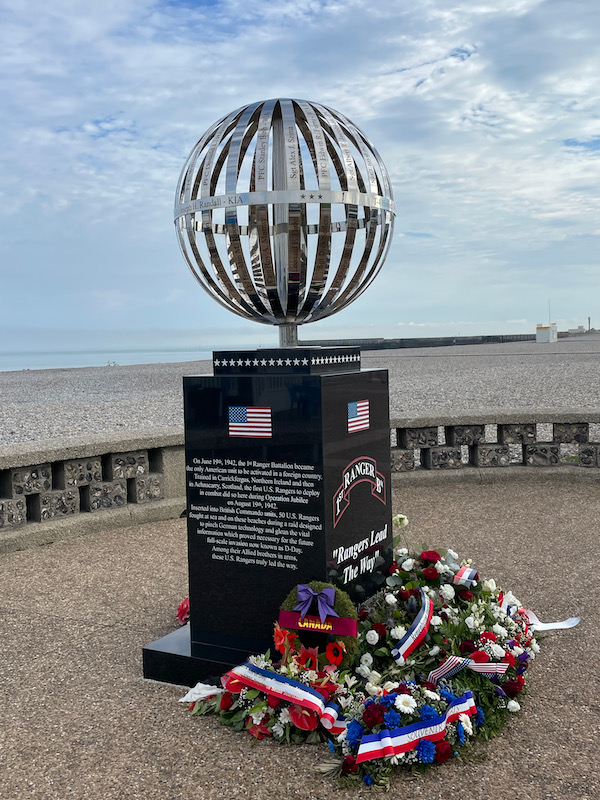
This is called the Venetian villa, built in the 2nd half of the 19th century out of brick and stone in a Moorish style. Lucy wants to live in the tower but only if we install an elevator for her.
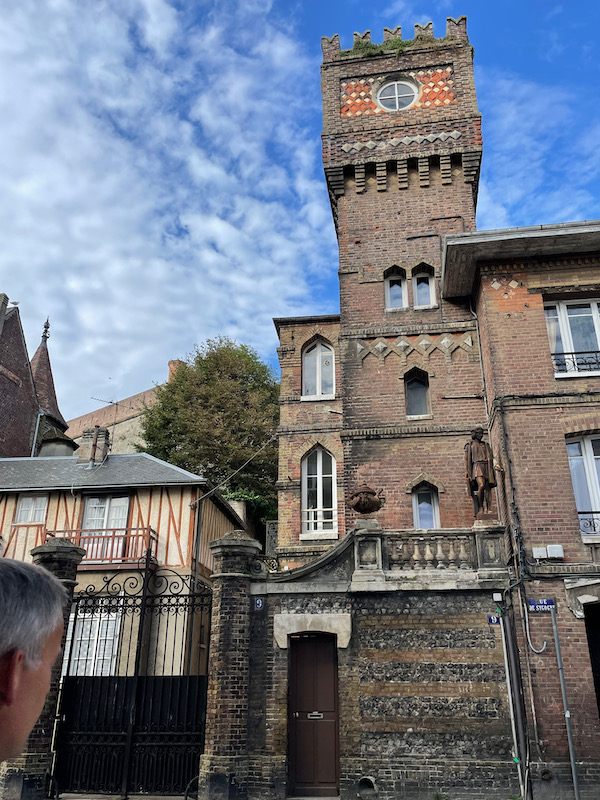
This is the "new" Church of Saint-Remy that was built in 1522 to replace the 13th-century church that the tower (that you saw earlier) comes from. The façade was completed in 1630 and is an interesting mix of Renaissance style (pediments, pilasters and columns of antique inspiration) with what I would call a Roman theater style. It wasn't open while we were there, so a couple exterior pictures will have to do.
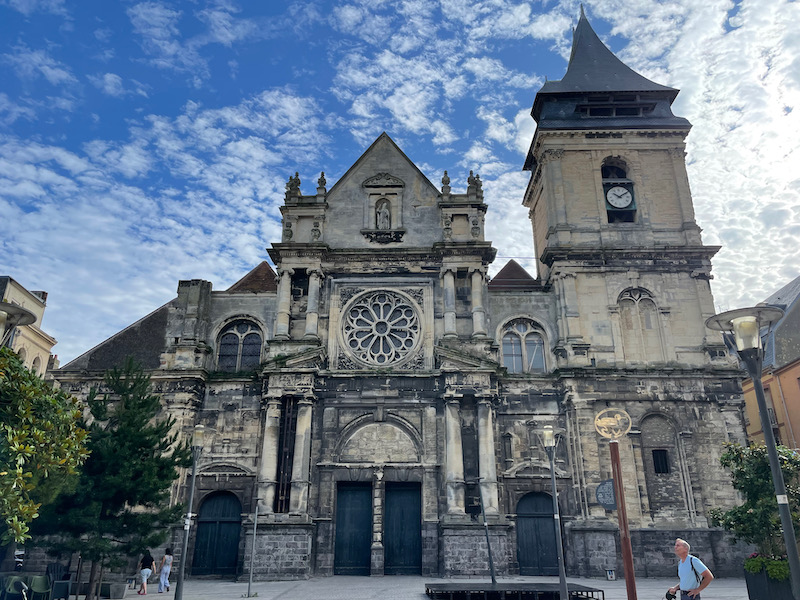
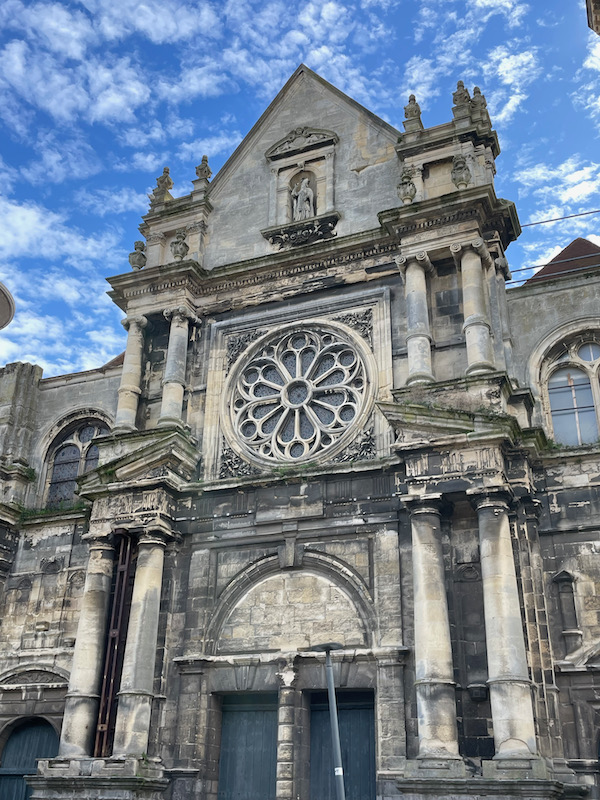
I don't know the history behind this building, which is now a bank, but it had a nice style and a barometer near the top.
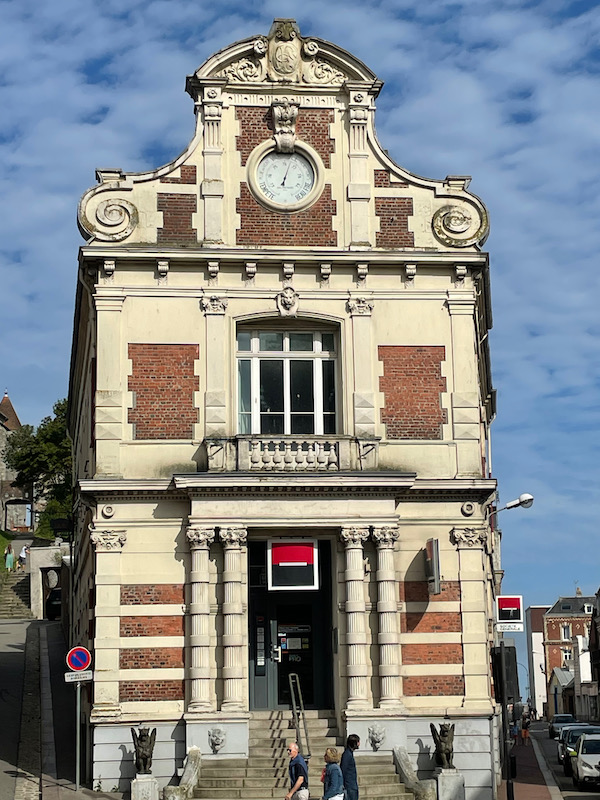
The oldest house in Dieppe, the Maison Miffant is the only half-timbered house to have escaped the bombardment of Dieppe in 1694.
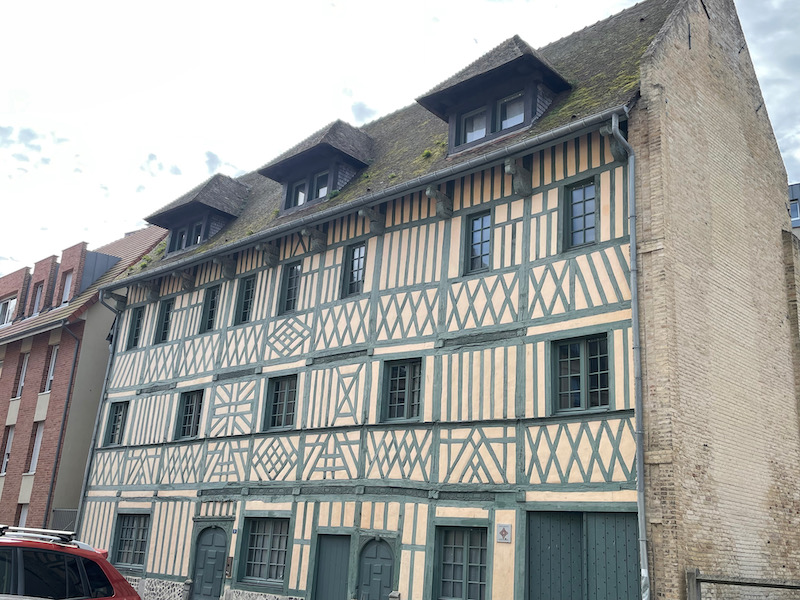
The Église_Saint-Jacques dates from the 12th to 16th centuries with a combination of Flamboyant Gothic and Renaissance styles. The bell tower is from the 15th century.
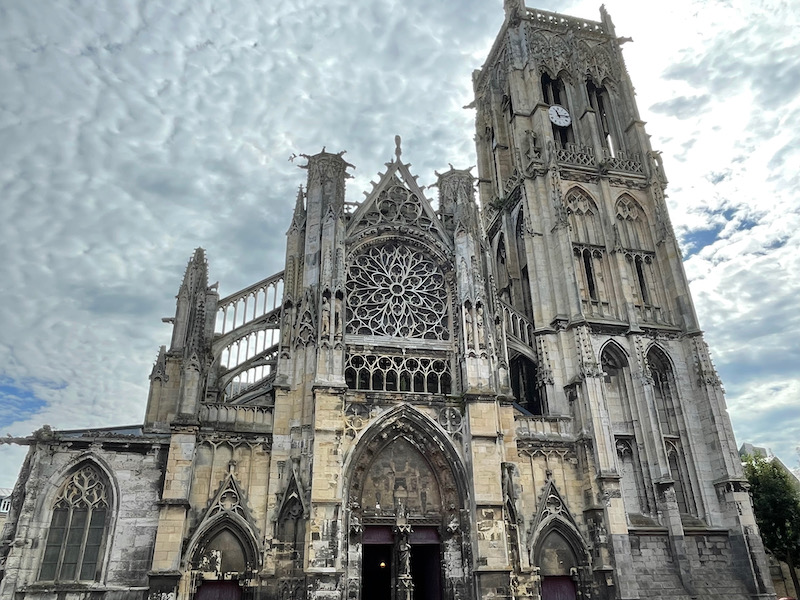
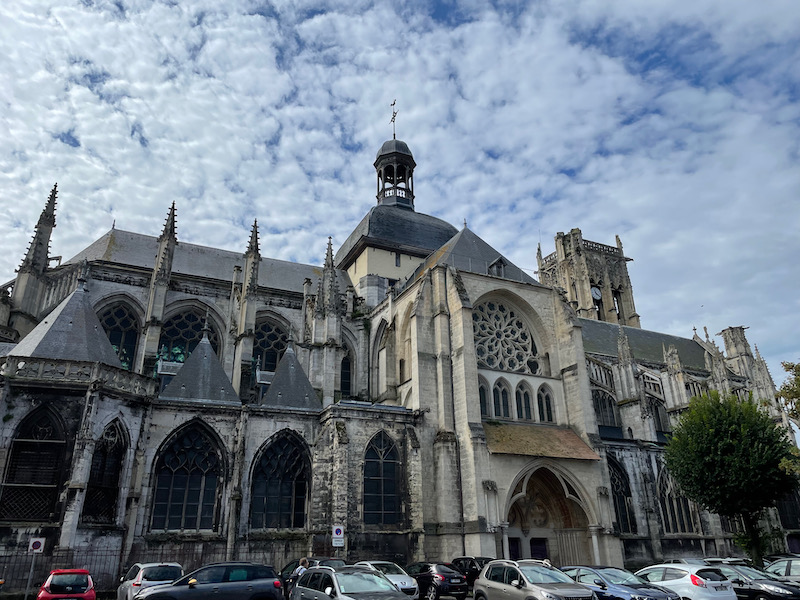
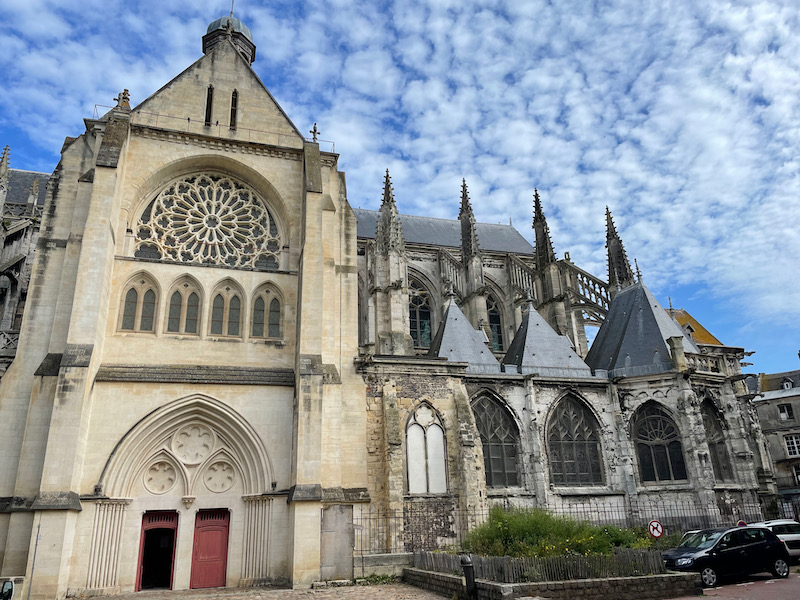
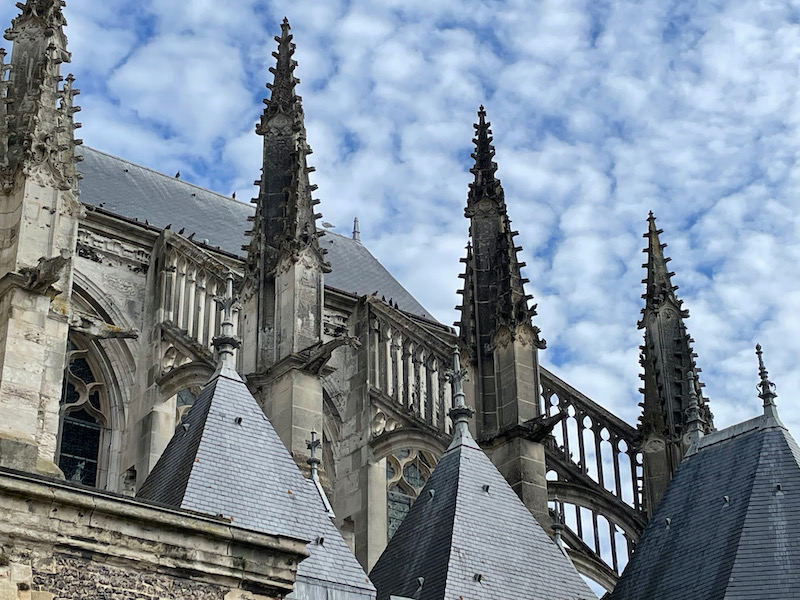
The ground floor of the nave is from the 13th century while the upper levels were added in the 14th century.
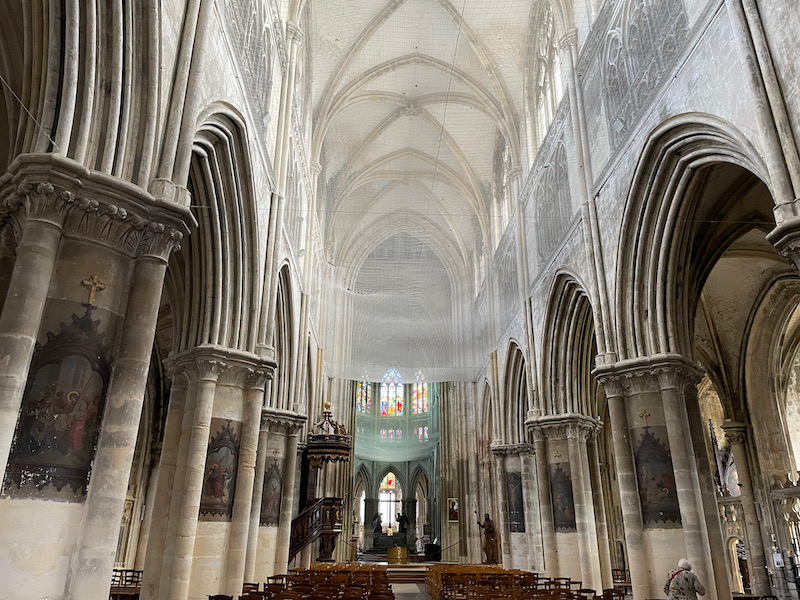
The side chapels were added between the buttresses of the nave in the 15th century but the decorations, which are marked by flamboyant Gothic styles, were done in the 16th century. The side chapels were somewhat unique in that they all had a "grill" on the opening instead of just being an open side chapel.
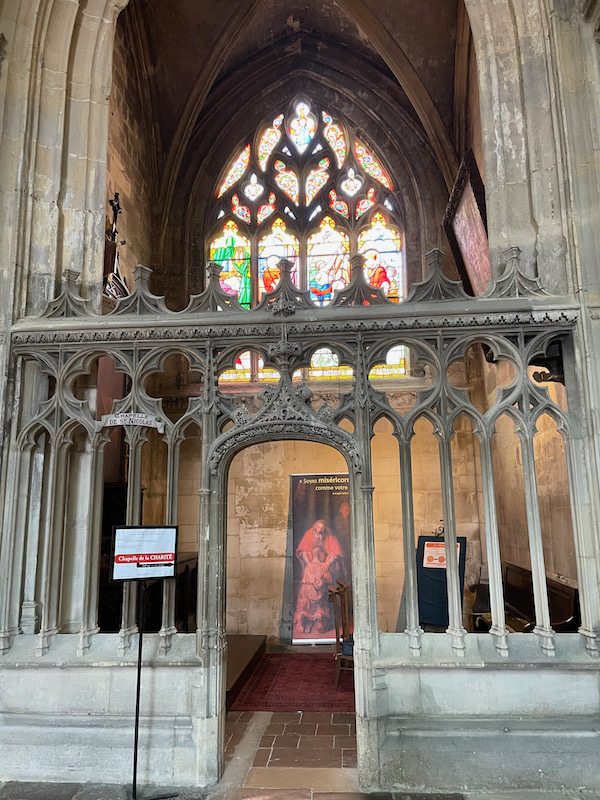
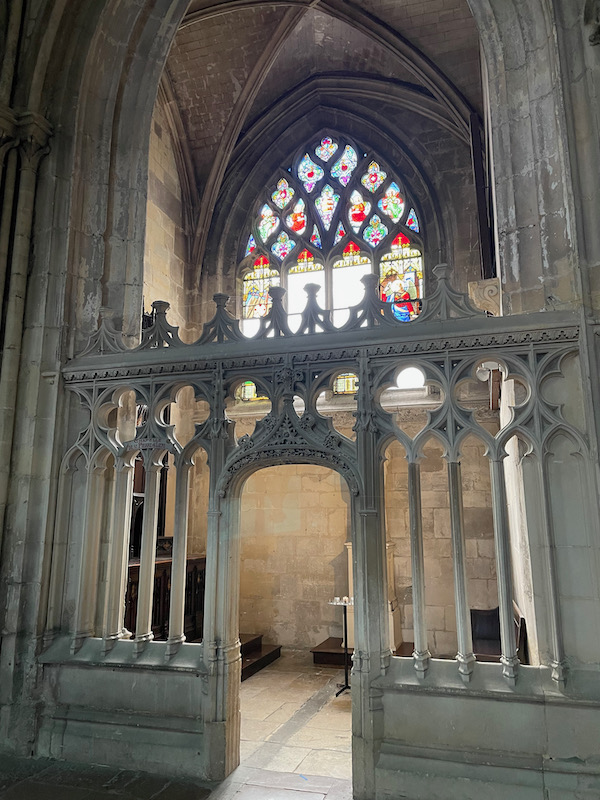
The main altar is pretty simple compared to some that we have seen (no canopy, just the altar table and 2 angels on top). There are a few nice wood pieces as well, including the choir stalls and preaching pulpit.
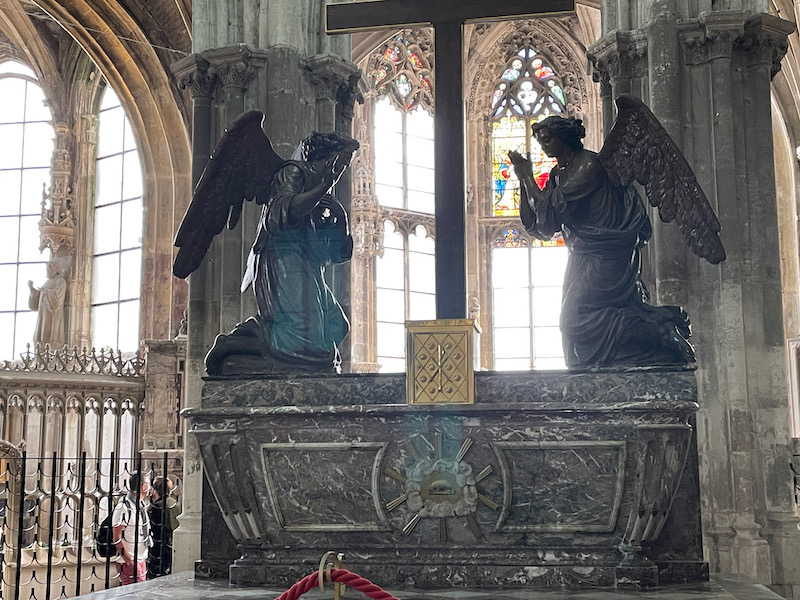
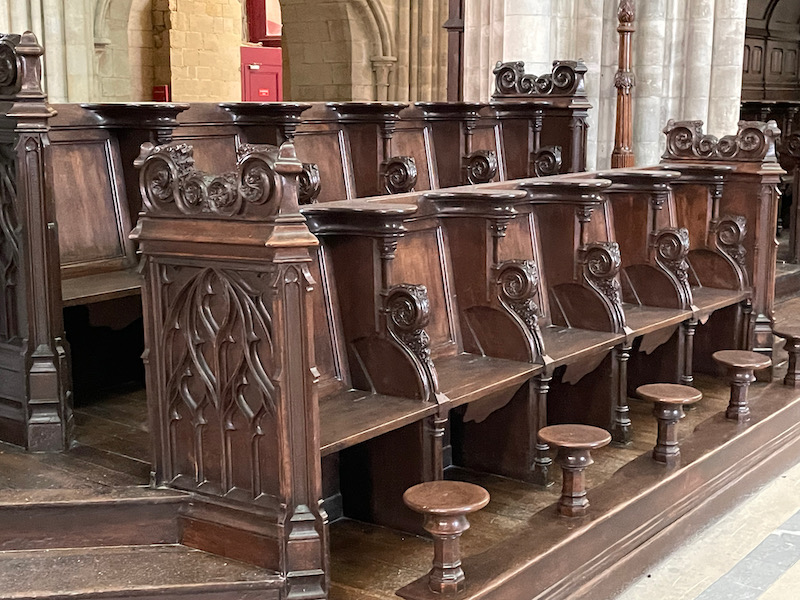
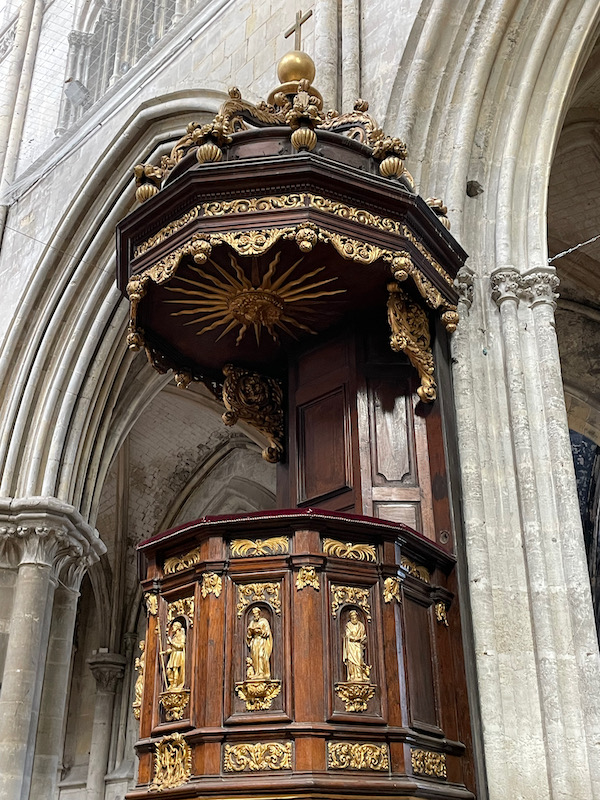
This side chapel is one of the larger ones, with the carved grill and the statue of the Virgin and infant from the 19th century. It has a really nice vault of carved stone dating from the 16th century.
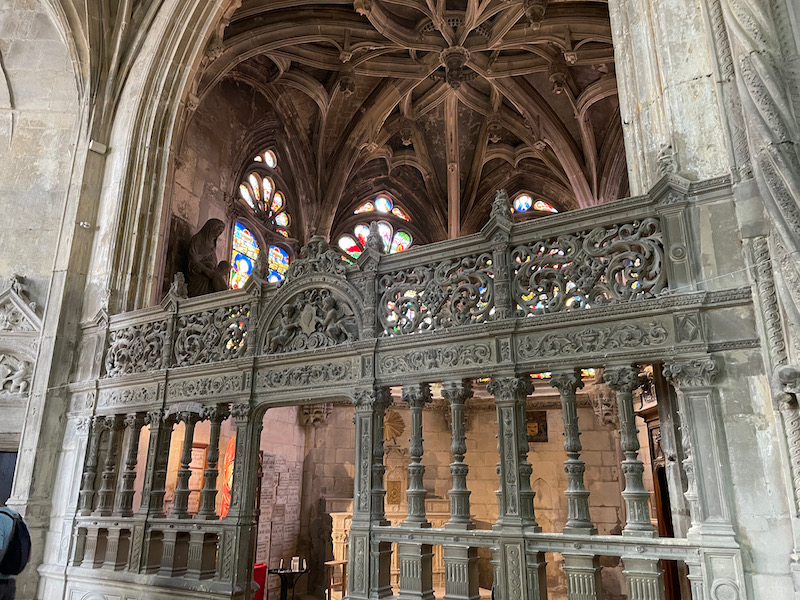
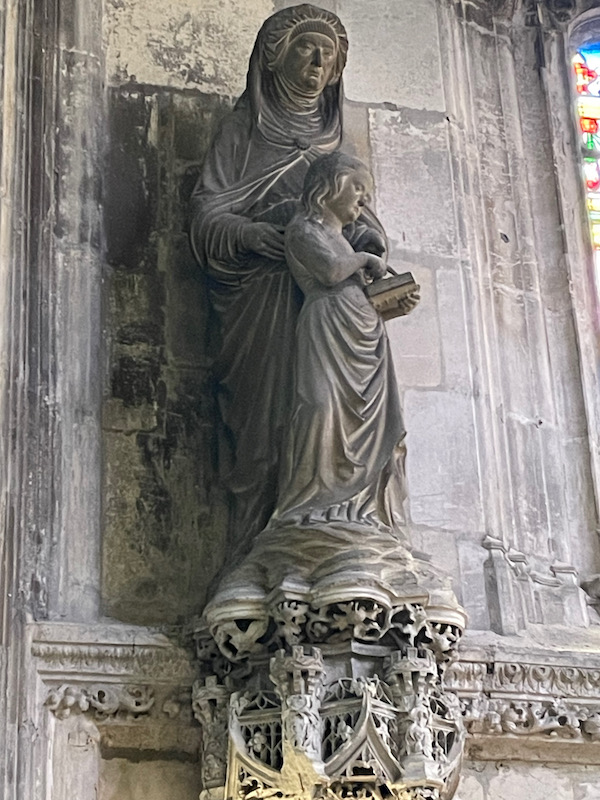
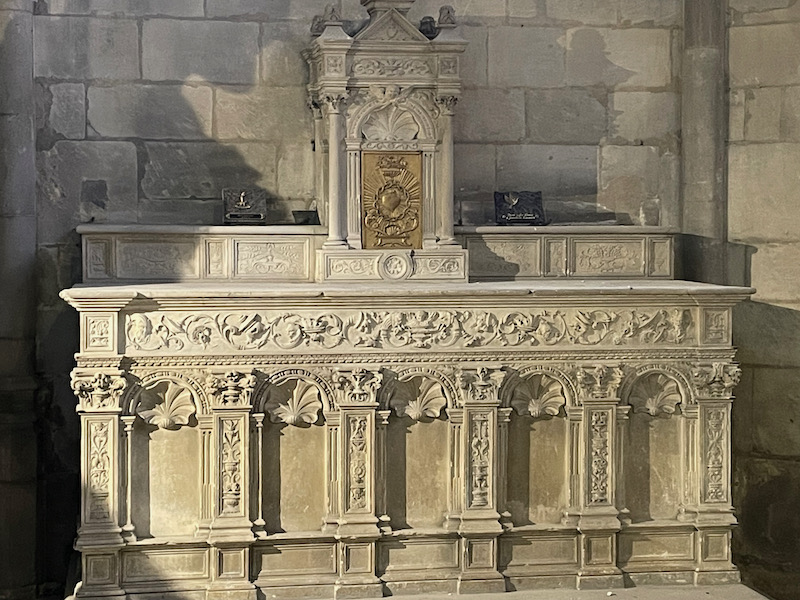
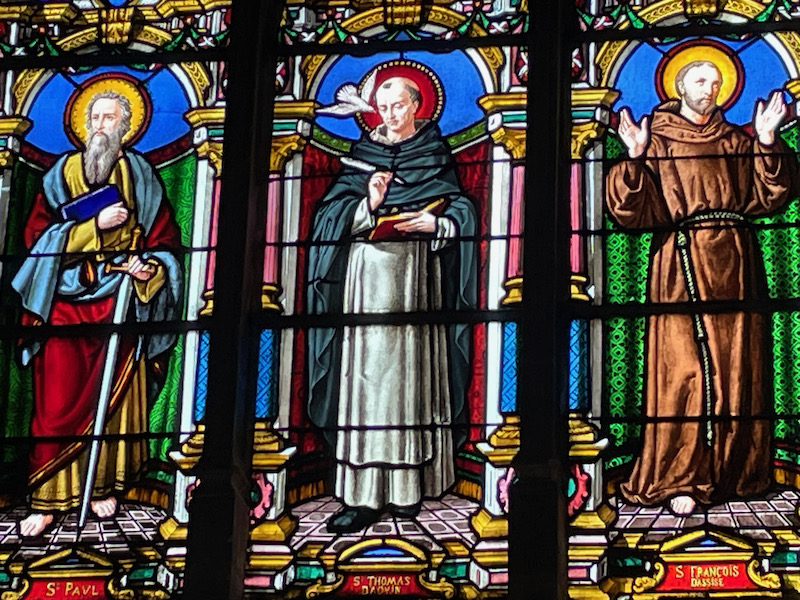
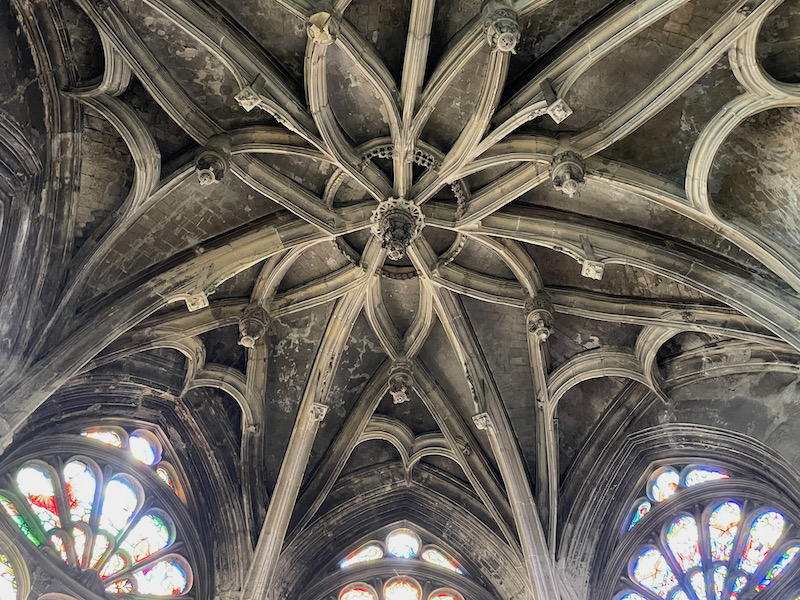
The back chapel which has a lot of very intricate flamboyant Gothic carved decorations.
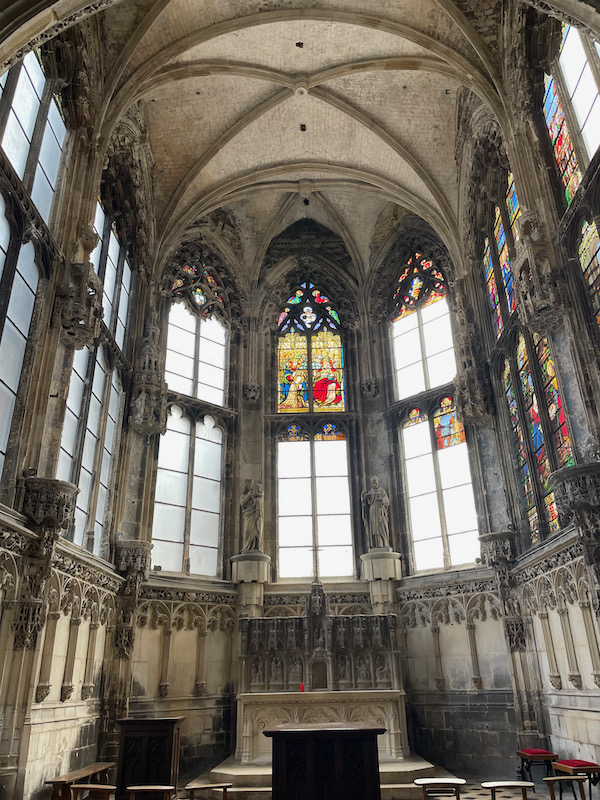
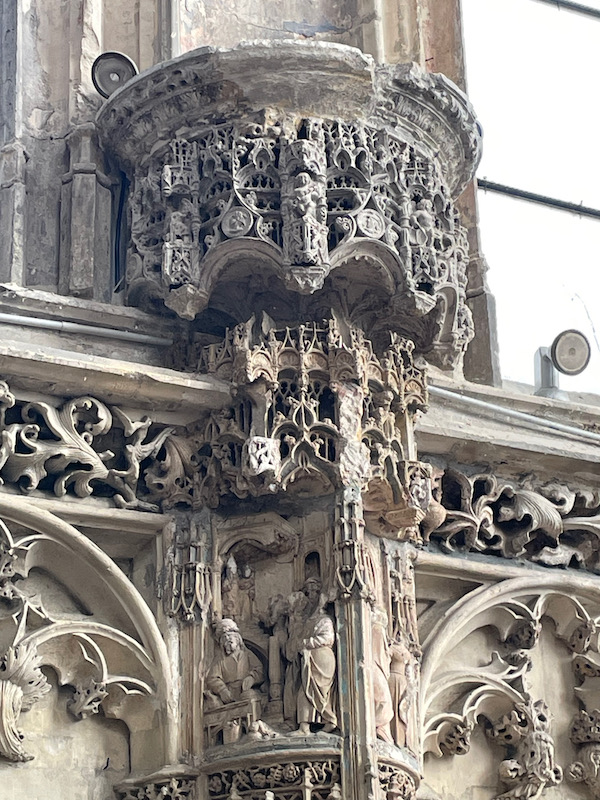
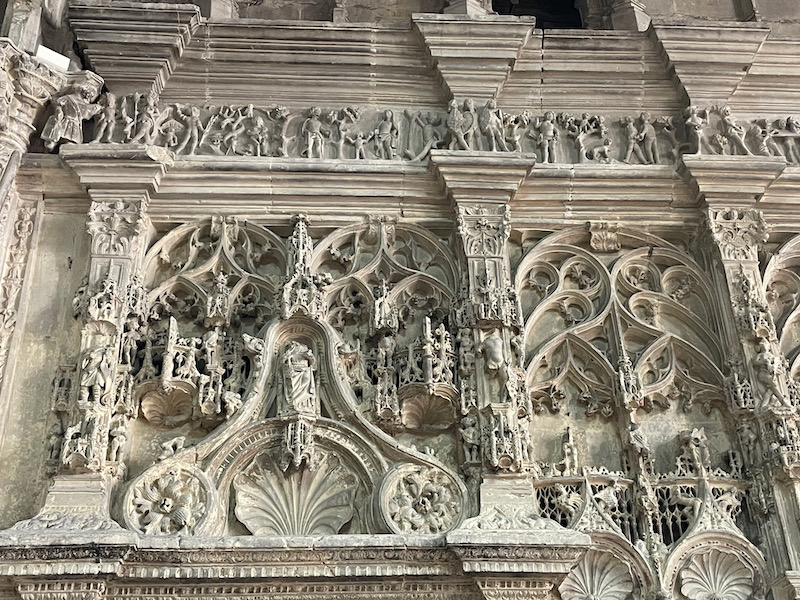
There are rose windows in each transept but as you can see, the glass has been replaced with generic glass.
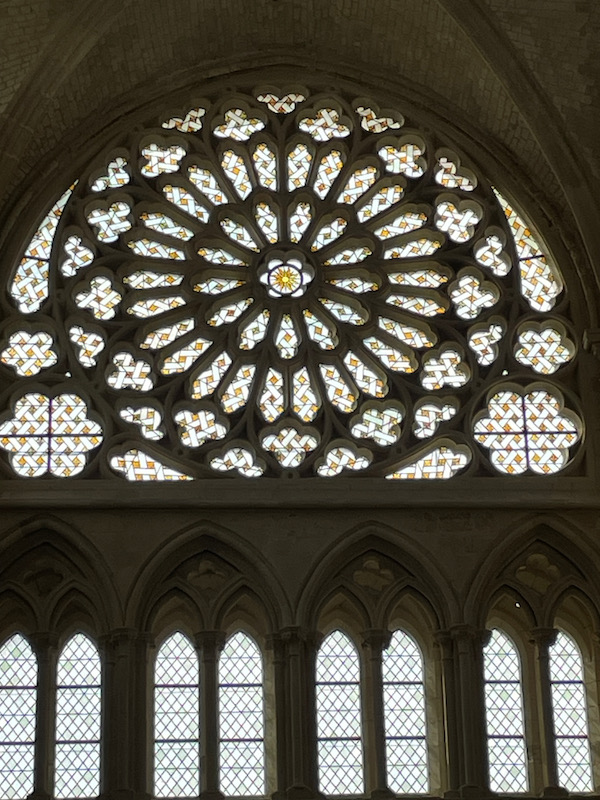
Around the nave, the columns have paintings of the Stations of the Cross.
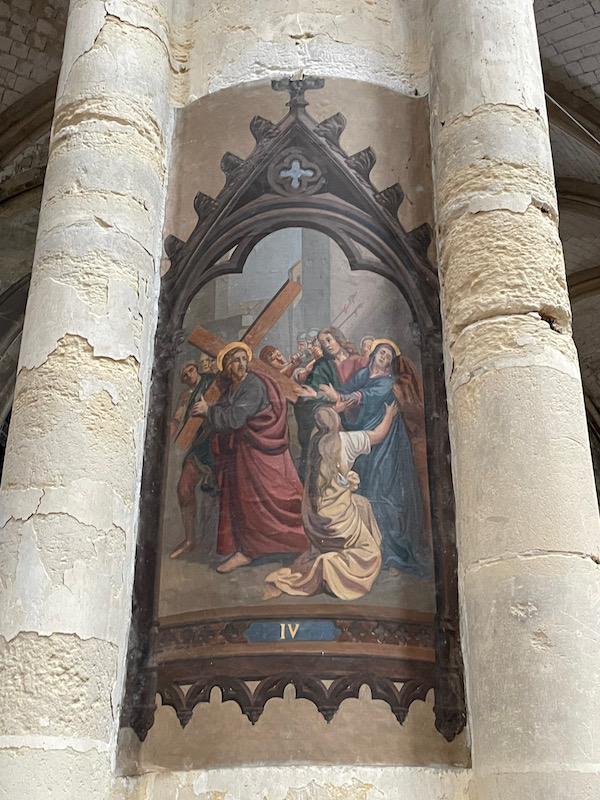
There is one side chapel that has a statue group showing the Entombment, with a large stone carved tracery over the door.
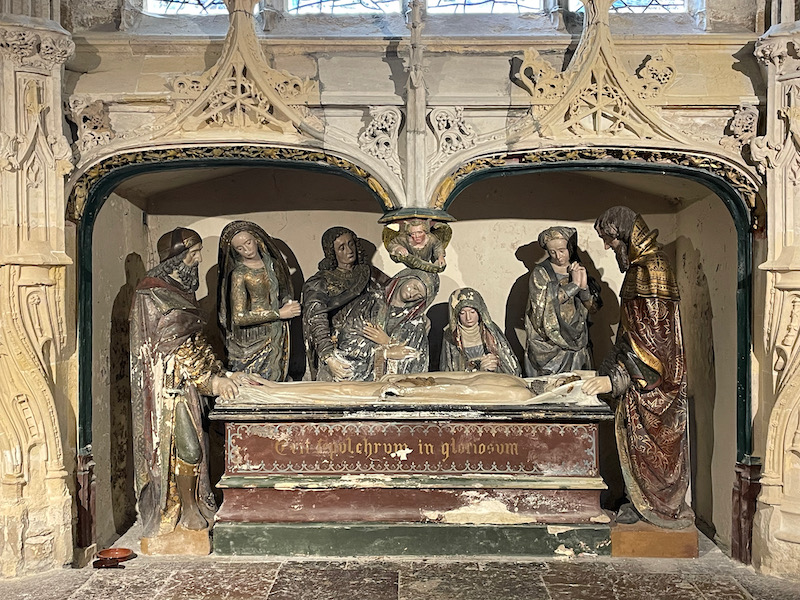
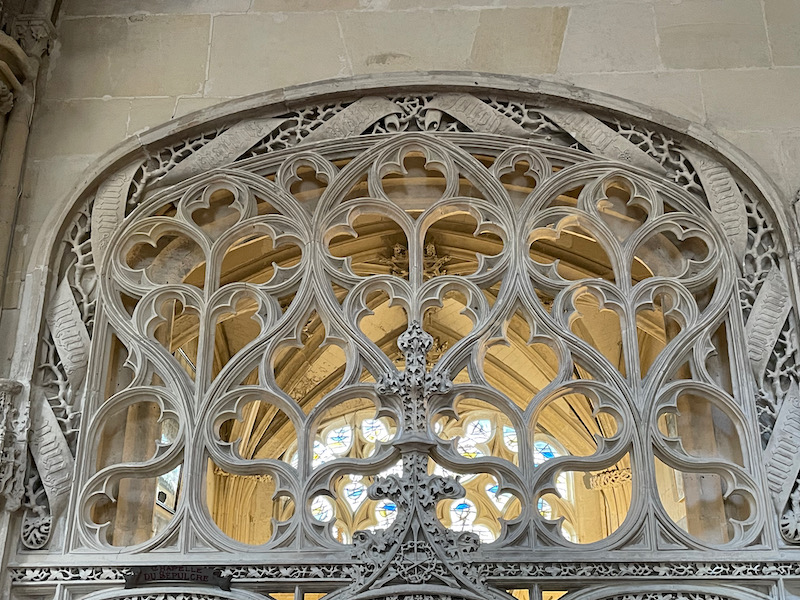
And a couple very modern stained-glass windows. You've seen a couple others ... some are from the 19th century, then others like these are very recent and modern, and then a large number of "generic" or even clear glass windows.
